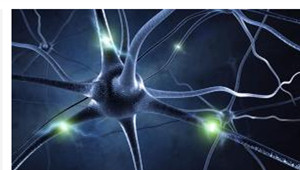Jun Luo, Hang Ye, Haoli Zheng, Shu Chen, Daqiang Huang , Modulating the activity of the dorsolateral prefrontal cortex by tDCS alters distributive decisions behind the veil of ignorance via risk preference, Behavioural Brain Research, 328 (2017) 70–80.
Distributive justice concerns how individuals and societies distribute income in a just or equal manner. Previous studies from behavioural experiments have revealed that participants’ distributive decisions vary according to the contexts of income distribution. Despite the long history of work on distributive behaviour, however, its psychological and neural underpinnings remain poorly understood. There many debates on whether and how the “weights” that are assigned to the individual payoffs (self-interest or risk aversion) and the payoff distribution of the others (social preference or fairness) in participants’ objective functions, especially behind the veil of ignorance. In the present study, we aimed to separately analyse the effects of risk aversion and impartial social preferences in a veil of ignorance setting and to test the roles of social welfare and self-interest in behavioural distributive justice. We thus provide evidence of a causal link between the neural and behavioural results through the application of bilateral transcranial direct current stimulation (tDCS) over the dorsolateral prefrontal cortex (DLPFC) of our participants. The participants were found to distribute more income to the lowest income stratum and to make fairer distributions under the veil after receiving right anodal/less cathodal tDCS over DLPFC. In contrast, the participants distributed less income to the lowest income stratum and made more unfair distribution under the veil after receiving right cathodal/left anodal tDCS over DLPFC. Simultaneously, we elicited the participants’ risk preferences and found that the participants who received right anodal/left cathodal tDCS over DLPFC were more conservative than the participants who received sham stimulation, whereas participants who received right cathodal/left anodal tDCS over DLPFC  were more risky than the participants who received sham stimulation. These findings are fully consistent with a stimulation effect of the participants’ distributive decisions under the veil of ignorance, and the participants’ distributive proportions to the lowest income stratum under the veil of ignorance were strongly related to their risk preference. Therefore, the present study demonstrated that modulating the excitability of the DLPFC using tDCS altered the distributive decisions of the participants under the veil of ignorance, and this effect might be attributable to a change in the individuals’ risk pReferences were more risky than the participants who received sham stimulation. These findings are fully consistent with a stimulation effect of the participants’ distributive decisions under the veil of ignorance, and the participants’ distributive proportions to the lowest income stratum under the veil of ignorance were strongly related to their risk preference. Therefore, the present study demonstrated that modulating the excitability of the DLPFC using tDCS altered the distributive decisions of the participants under the veil of ignorance, and this effect might be attributable to a change in the individuals’ risk pReferences
Jun Luo, Shu Chen, Daqiang Huang, Hang Ye & Haoli Zheng , Whether modulating the activity of the temporalparietal junction alters distribution decisions within different contexts: Evidence from a tDCS study, Frontiers in Psychology, Published: 21 February 2017.
Distributive justice concerns how individuals and societies distribute income in a just or equal manner. We aimed to test the roles of social preference in behavioral distributive justice. We thus provide evidence of a causal link between the neural and behavioral results through the application of bilateral transcranial direct current stimulation (tDCS) over the temporoparietal junction (TPJ) of our participants. The participants were found to make fairer distributions within the known position after receiving right anodal/left cathodal tDCS and receiving right cathodal/left anodal tDCS over the TPJ than the participants who  received the sham stimulation. Simultaneously, we elicited the participants’ advantage inequity aversion and found that the participants who received right anodal/left cathodal tDCS and who received right cathodal/left anodal tDCS over the TPJ were more averse to advantage inequity. Additionally, the participants’ distributive proportions to the lowest income stratum within the known position were strongly related to their social preference of advantage inequity aversion. Therefore, the present study demonstrated that the modulation of the excitability of the TPJ using tDCS altered the distributive decisions of the participants within the known position, and this effect might be attributable to a change in the individuals’ social preferences. received the sham stimulation. Simultaneously, we elicited the participants’ advantage inequity aversion and found that the participants who received right anodal/left cathodal tDCS and who received right cathodal/left anodal tDCS over the TPJ were more averse to advantage inequity. Additionally, the participants’ distributive proportions to the lowest income stratum within the known position were strongly related to their social preference of advantage inequity aversion. Therefore, the present study demonstrated that the modulation of the excitability of the TPJ using tDCS altered the distributive decisions of the participants within the known position, and this effect might be attributable to a change in the individuals’ social preferences.
Haoli Zheng, Daqiang Huang, Shu Chen, Siqi Wang, Wenmin Guo, Jun Luo, Hang Ye & Yefeng Chen, Modulating the activity of ventromedial prefrontal cortex by anodal tDCS enhances the trustee’s repayment through altruism, Frontiers in Psychology, Published: 22 September 2016.
Trust and trustworthiness are essential to an efficient economy and play crucial rolesin social life. Previous evidence from behavioral experiments has revealed that thetrustworthiness of individuals is closely related with their altruistic preference. It hasbeen demonstrated that the ventromedial prefrontal cortex (vmPFC) is associatedwith decisions involving trustworthiness. Moreover, vmPFC lesion patients showed lesstrustworthiness and altruism than control subjects, indicating the indispensable role ofthis specific brain area in human social interactions. However, the causal relationshipbetween this neural area and trustworthiness, as well as altruism, has not been fullyrevealed. The potential neural basis behind the behavior of trustees’ repayment hasalso seldom been discussed. In the present study, we aimed to provide evidenceof a direct link between the neural and behavioral results through the applicationof transcranial direct current stimulation (tDCS) over the vmPFC of our  participants.We found that activating the vmPFC could promote both the trustworthiness andaltruism of our participants. We also show that enhancing the excitability of the vmPFCusing tDCS increased the trustworthiness of the participants, and this promotingeffect might be attributable to the enhancement of individuals’ altruistic preference. Inaddition, we revealed that the enhancing effect in trustworthiness and altruism might bespecific to the activation of the vmPFC by applying tDCS over another brain regionwithin the prefrontal cortex as a control site. Crucially, our findings provide directevidence supporting the critical role of the vmPFC in cooperative behaviors in economicinteractions, especially the trustees’ repayment in the trust game and the dictators’altruistic transfer in the dictator game. participants.We found that activating the vmPFC could promote both the trustworthiness andaltruism of our participants. We also show that enhancing the excitability of the vmPFCusing tDCS increased the trustworthiness of the participants, and this promotingeffect might be attributable to the enhancement of individuals’ altruistic preference. Inaddition, we revealed that the enhancing effect in trustworthiness and altruism might bespecific to the activation of the vmPFC by applying tDCS over another brain regionwithin the prefrontal cortex as a control site. Crucially, our findings provide directevidence supporting the critical role of the vmPFC in cooperative behaviors in economicinteractions, especially the trustees’ repayment in the trust game and the dictators’altruistic transfer in the dictator game.
Hang Ye, Shu Chen, Jun Luo, Fei Tan, Yongmin Jia & Yefeng Chen, Increasing returns to scale: The solution to the second-order social dilemma, Scientific Reports, Published: 18 August, 2016.
Humans benefit from extensive cooperation; however, the existence of free-riders may cause cooperation to collapse. This is called the social dilemma. It has been shown that punishing free-riders is an effective way of resolving this problem. Because punishment is costly, this gives rise to the second-order social dilemma. Without exception, existing solutions rely on some stringent assumptions. This paper proposes, under very mild conditions, a simple model of a public goods game featuring increasing returns to scale. We find that punishers stand out and even dominate the population provided  that the degree of increasing returns to scale is large enough; consequently, the second-order social dilemma dissipates. Historical evidence shows that people are more willing to cooperate with others and punish defectors when they suffer from either internal or external menaces. During the prehistoric age, the abundance of contributors was decisive in joint endeavours such as fighting floods, defending territory, and hunting. These situations serve as favourable examples of public goods games in which the degrees of increasing returns to scale are undoubtedly very large. Our findings show that natural selection has endowed human kind with a tendency to pursue justice and punish defection that deviates from social norms. that the degree of increasing returns to scale is large enough; consequently, the second-order social dilemma dissipates. Historical evidence shows that people are more willing to cooperate with others and punish defectors when they suffer from either internal or external menaces. During the prehistoric age, the abundance of contributors was decisive in joint endeavours such as fighting floods, defending territory, and hunting. These situations serve as favourable examples of public goods games in which the degrees of increasing returns to scale are undoubtedly very large. Our findings show that natural selection has endowed human kind with a tendency to pursue justice and punish defection that deviates from social norms.
Tanzhe Tang & Hang Ye, The blessing of sexuality: Evolution of altruism with mating preference, Journal of Artificial Societies and Social Simulation, 19(2) 2, (2016).
Current simulation practices in artificial societies typically ignore the contribution of sexuality as adriving force for the evolution of prosocial behaviours. As recent researches in biology and genetics argued,sexual attractiveness, via the method of sexual selection, can explain many aspects of the second-order socialdilemma. The basic hypothesis is that altruism is a sexually attractive virtue. To introduce the hypothesisinto the analysis of human altruism, we employ the concepts of altruistic punishment and the behaviour-basedsexual attractiveness to develop a gender-based evolutionary model where mating preference acts as the compensationto the male punishers from females in the given public goods game. In the model, the force of sexualselection is  expressed as the e ect of mating preference on altruism. The computer simulation indicates thatsocial cohesion can be achieved by the existence of sexuality in an artificial society where the co-evolution ofmating preference, altruistic punishment and cooperation exist. We then extend the model in two ways: (1) weemploy the variable size population assumption to test the invasion capacity of cooperators, and (2) individualvariation in altruistic investment is introduced to replace the average population payo function in the baselinemodel. The variable size population and individual variation in investment are found to have amplifyinge ects on the evolution of altruism from di erent perspectives. Finally, we discuss the definition of altruism indynamic evolutionary games, as well as the gender di erences in the formation of altruism in primitive tribes. expressed as the e ect of mating preference on altruism. The computer simulation indicates thatsocial cohesion can be achieved by the existence of sexuality in an artificial society where the co-evolution ofmating preference, altruistic punishment and cooperation exist. We then extend the model in two ways: (1) weemploy the variable size population assumption to test the invasion capacity of cooperators, and (2) individualvariation in altruistic investment is introduced to replace the average population payo function in the baselinemodel. The variable size population and individual variation in investment are found to have amplifyinge ects on the evolution of altruism from di erent perspectives. Finally, we discuss the definition of altruism indynamic evolutionary games, as well as the gender di erences in the formation of altruism in primitive tribes.
|

